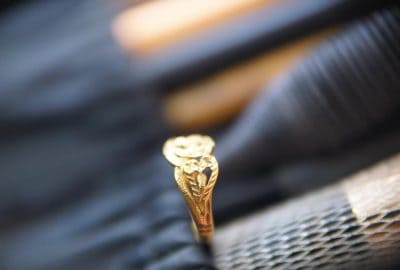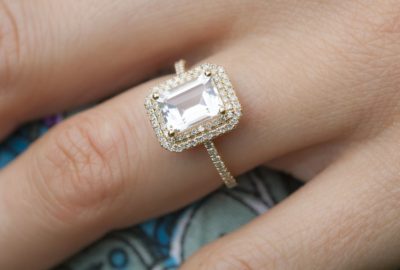Uncategorized
Once Upon a Time
Charms go back as far as the Neolithic era where man would pick up an unusual stone or piece of wood and carry it with him to ward off his enemies. Elaborate jewelry made of precious stones and metals emerged during the age of the Egyptian Pharaohs. It was during this time that the first recognizable charm bracelets and necklaces first appeared.
Like people of many ancient civilizations, the citizens of ancient Egypt lived very short lives by today’s standard – 30 to 40 years on average. With so little time on earth, they obsessively prepared for a prosperous life after death. Charm bracelets played a significant role in the preparation process. Charm wrist and neck bracelets were not only coveted as protective shields and signs of status in this life, they were also worn as ID tags to help the Gods guide the wearer and his/her possessions to the proper status level in the afterlife. Kind of an “if found, please return to” note from home.
. . . When In Rome
During the Roman Empire Christians would pull the “ichthys” (fish) charm from underneath their garments to identify themselves to other Christians to gain entry into secret, forbidden worship activities. The Jewish scholar of that same time would write passages from Jewish law on tiny slips of parchment and carefully insert the slips into a small, golden amulet that was worn around his neck. This of act reverence and piety was meant to keep the law close to the heart.
. . . Knights, Fights and a Little Extra Protection
Fast forward to the dark days of the Middle Ages, and we find that charms and amulets were put to use by knights and kings. They were most often used with incantations to wreak havoc on the occupants of enemy castles and protect warriors in battle. Charms were also worn on belts to represent family origin, political standing and profession.
General wearing of charms began to lose favor with the wealthy classes during the Renaissance as mass produced books emerged and superstitions faded. However, charms and amulets were still widely used by people of lesser means and education. The role of the charm remained relatively unchanged until the early 1900s.
. . . The Queen of Charm
In the early 20th century, the bracelets of Queen Victoria ignited the next big wave of charm wearing. It was at this stage that charms had a dramatic change of purpose. They went from being practical tools to becoming decorative fashion jewelry. Small lockets, glass beads and family crests that hung on bracelets and necklaces were all the rage.
. . . The Greatest Generation
The end of WWII saw the explosion of charm jewelry as we know it today. Soldiers leaving Europe and islands in the Pacific purchased little handmade trinkets as gifts to bring home to their sweethearts. Native craftsmen fashioned small bits of metal into little replicas of items common to the locale. Enterprising jewelers in the States quickly picked up on the trend to create charms for all occasions.
. . . Gumball Charms
I ran across these fun charms not long ago and fell in love with them. Made of celluloid (an early plastic) they are charms and little prizes that came out of gumball machines and candy boxes in the 1940s. These charms were collected by kids and worn on bracelets and necklaces of string and beaded chain (dog tag chain). Many of the themes are common – jungle animals, sports, sailing ships, army men, and family pets. But there were a number of commercial applications as well, primarily from comic strips. Popeye, Betty Boop, Mickey Mouse, the Seven Dwarfs, Orphan Annie are just a few examples.
. . . Bobby Socks, Disco, and the Go-Gos
By the 1950s, the charm bracelet was a must-have accessory for girls and women. Major rites of passage – 16th birthdays, graduations, weddings, travel and the arrival of children – were all recorded on the links of their bracelets. Today some of these vintage bracelets sell for two to three thousand dollars at auction.
The charm bracelet began to disappear from the fashion scene during the early 1970s. Disco was in and bare gold chains became the new status symbol. But in the mid-1980s charm bracelets reappeared. New-money heirs uninterested in the old baubles of their dead relatives were liquidating huge estates. Charms that had been out of circulation for decades were showing up in antique stores and flea markets. Savvy buyers snapped them up at cheap prices.
. . . There’s No Place Like Home
The boom in collectibles in the 1990s drove a huge demand for vintage charms and charm bracelets. A gold charm costing $10 in 1950 easily commanded $70 to $80. Vintage mechanical charms (charms with moving parts) often sold for over $100 and were highly prized by serious collectors. Even with the advent of massive buying and selling arenas like eBay, prices for vintage gold charms remain strong and show no sign of decline in the new century.
The fashion industry once again discovered the lure of the charm bracelet, flooding the market with new charm styles in all price ranges. Fashion giants like Louis Vuitton have brought the glamour back to charm bracelets, declaring them the must-have accessory for any occasion. And if the past is any indication, charm bracelets will be in style for quite some time.













































Leave a reply